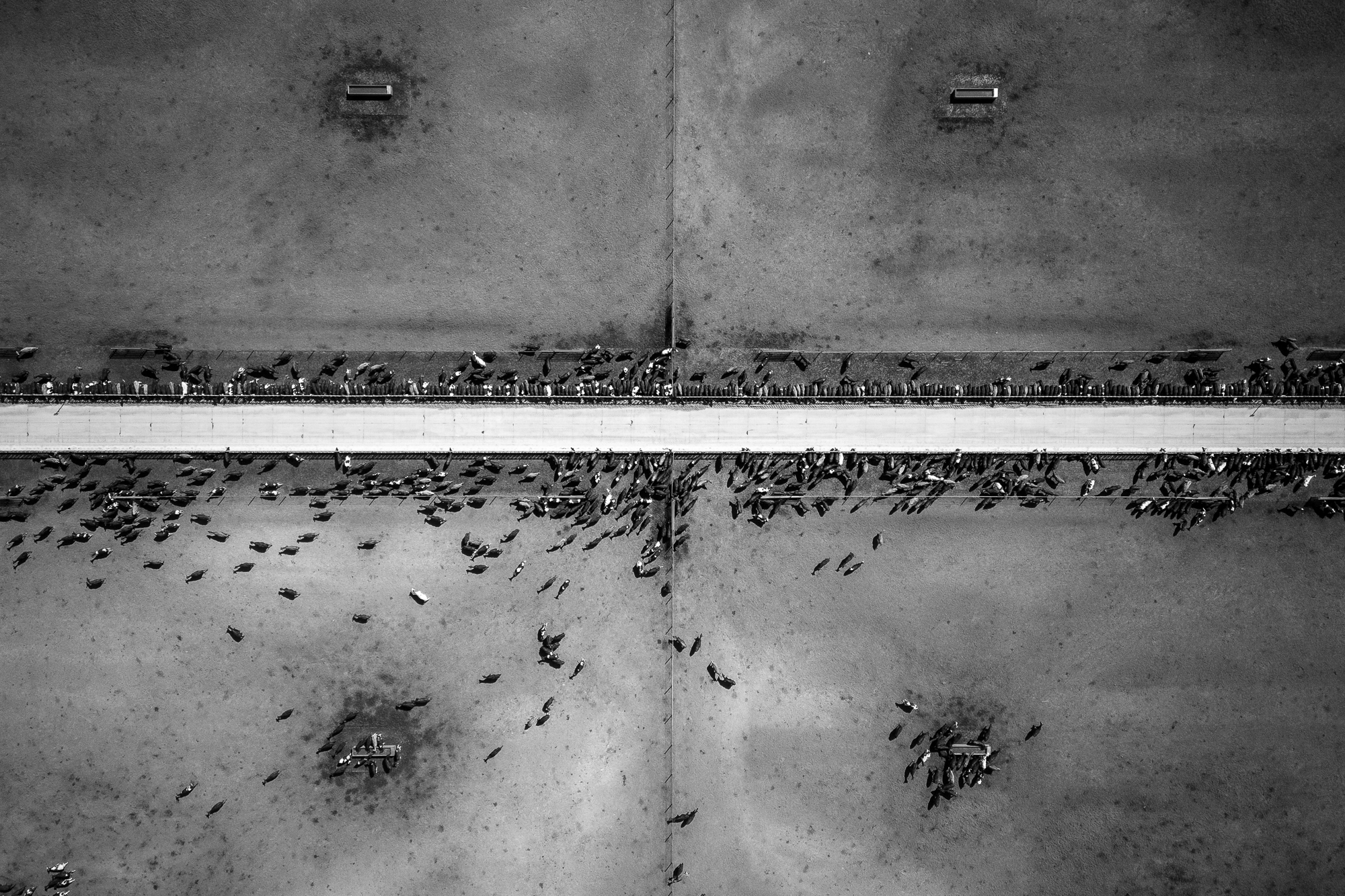This story was produced by Grist and co-published with Fresnoland.
The land of the Central Valley works hard. Here in the heart of California, in the most productive farming region in the United States, almost every square inch of land has been razed, planted, and shaped to support large-scale agriculture. The valley produces almonds, walnuts, pistachios, olives, cherries, beans, eggs, milk, beef, melons, pumpkins, sweet potatoes, tomatoes, and garlic.
This economic mandate is clear to the naked eye: Trucks laden with fertilizer or diesel trundle down arrow-straight roads past square field after square field, each one dense with tomato shrubs or nut trees. Canals slice between orchards and acres of silage, pushing all-important irrigation water through a network of laterals from farm to farm. Cows jostle for space beneath metal awnings on crowded patches of dirt, emitting a stench that wafts over nearby towns.
There is one exception to this law of productivity. In the midst of the valley, at the confluence of two rivers that have been dammed and diverted almost to the point of disappearance, there is a wilderness. The ground is covered in water that seeps slowly across what used to be walnut orchards, the surface buzzing with mosquitoes and songbirds. Trees climb over each other above thick knots of reedy grass, consuming what used to be levees and culverts. Beavers, quail, and deer, which haven’t been seen in the area in decades, tiptoe through swampy ponds early in the morning, while migratory birds alight overnight on knolls before flying south.
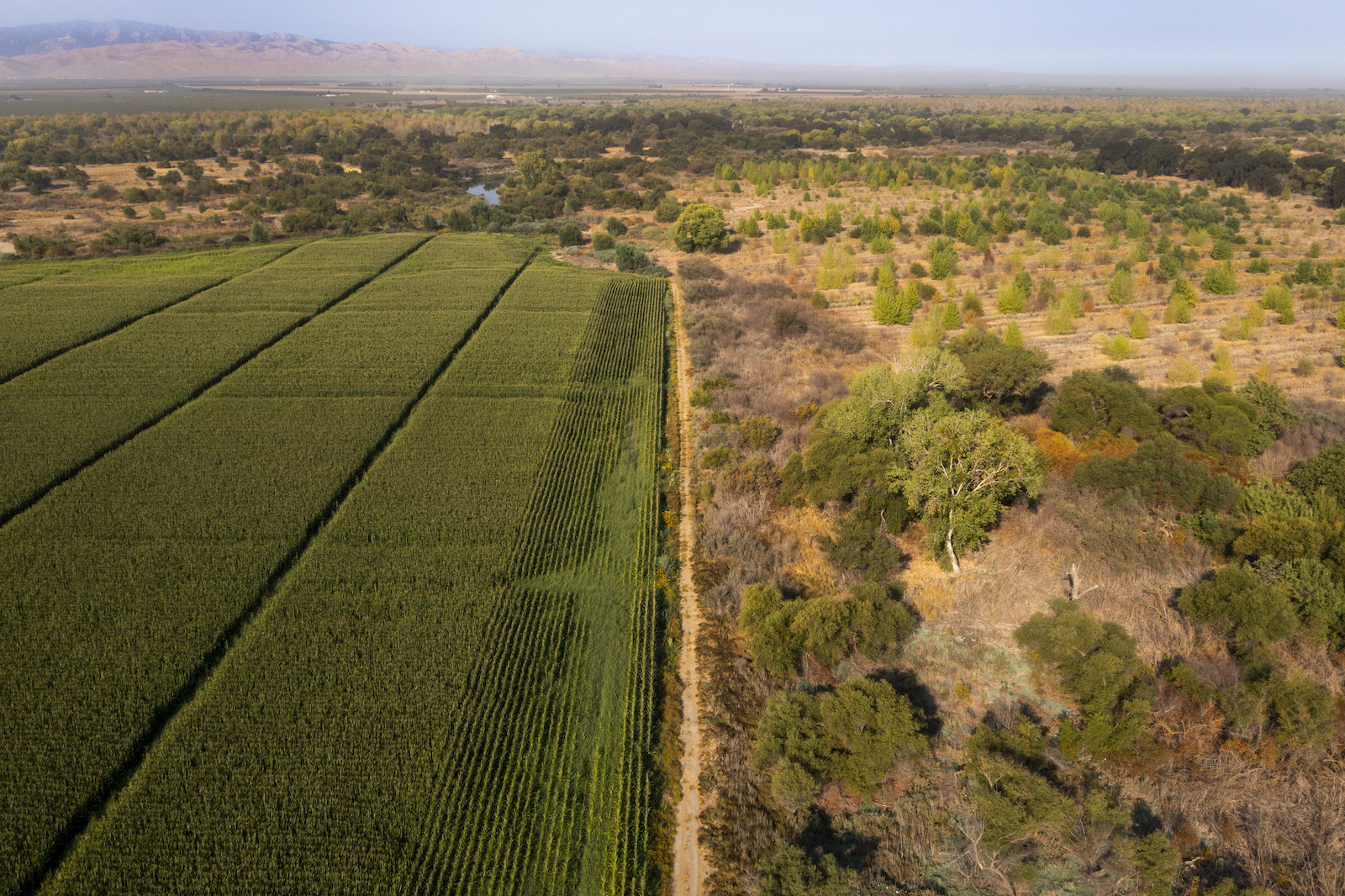
Austin Stevenot, who is in charge of maintaining this restored jungle of water and wild vegetation, says this is how the Central Valley is supposed to look. Indeed, it’s how the land did look for thousands of years until white settlers arrived in the 19th century and remade it for industrial-scale agriculture. In the era before colonization, Stevenot’s ancestors in the California Miwok tribe used the region’s native plants for cooking, basket weaving, and making herbal medicines. Now those plants have returned.
“I could walk around this landscape and go, ‘I can use that, I can use this to do that, I can eat that, I can eat that, I can do this with that,’” he told me as we drove through the flooded land in his pickup truck. “I have a different way of looking at the ground.”
You wouldn’t know it without Stevenot there to point out the signs, but this untamed floodplain used to be a workhorse parcel, just like the land around it. The fertile site at the confluence of the San Joaquin and Tuolumne rivers once hosted a dairy operation and a cluster of crop fields owned by one of the county’s most prominent farmers. Around a decade ago, a conservation nonprofit worked out a deal to buy the 2,100-acre tract from the farmer, rip up the fields, and restore the ancient vegetation that once existed there. The conservationists’ goal with this $40 million project was not just to restore a natural habitat, but also to pilot a solution to the massive water management crisis that has bedeviled California and the West for decades.
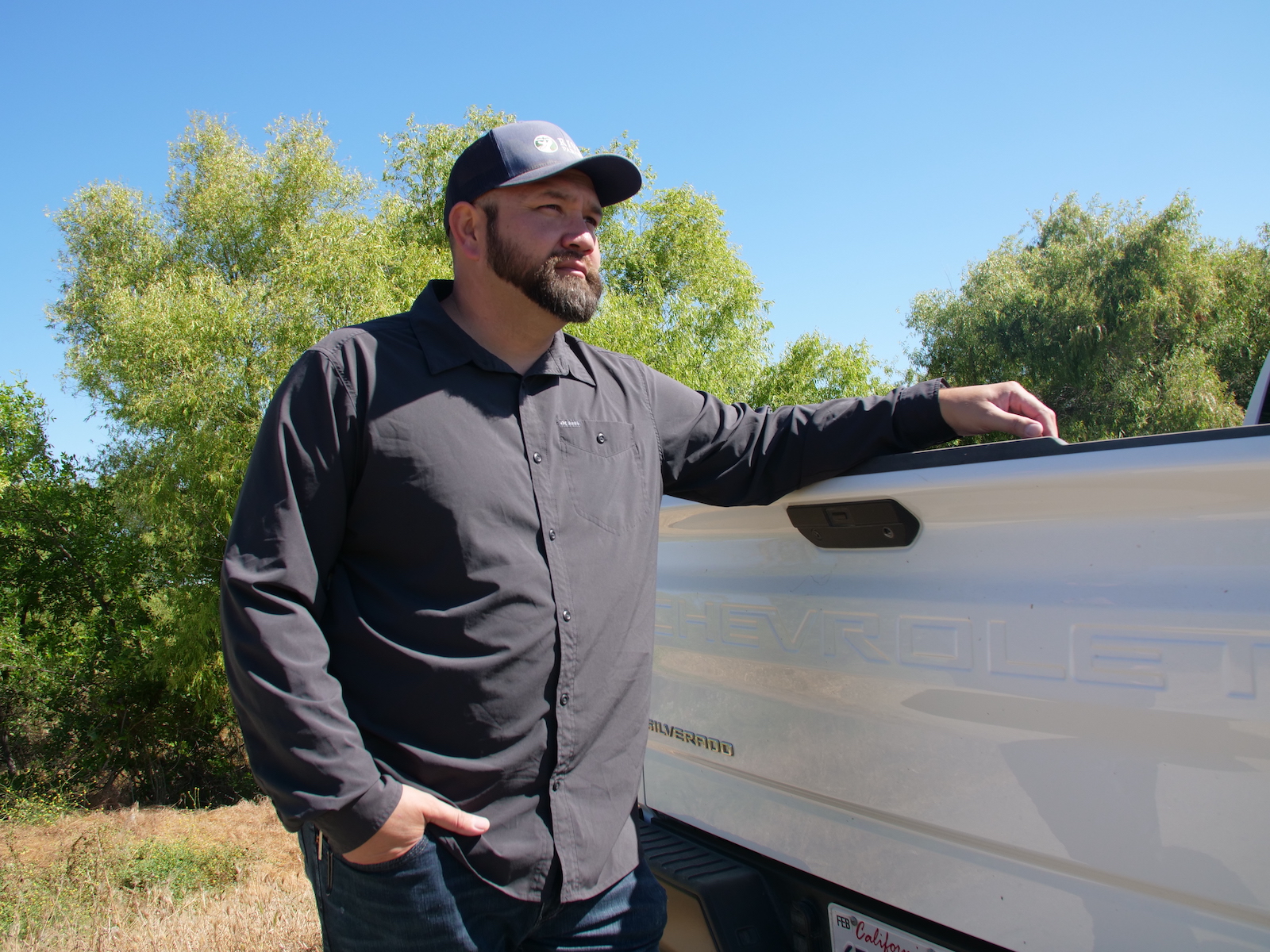
Like many other parts of the West, the Central Valley always seems to have either too little water or too much. During dry years, when mountain reservoirs dry up, farmers mine groundwater from aquifers, draining them so fast that the land around them starts to sink. During wet years, when the reservoirs fill up, water comes streaming down rivers and bursts through aging levees, flooding farmland and inundating valley towns.
The restored floodplain solves both problems at once. During wet years like this one, it absorbs excess water from the San Joaquin River, slowing down the waterway before it can rush downstream toward large cities like Stockton. As the water moves through the site, it seeps into the ground, recharging groundwater aquifers that farmers and dairy owners have drained over the past century. In addition to these two functions, the restored swamp also sequesters an amount of carbon dioxide equivalent to that produced by thousands of gas-powered vehicles. It also provides a haven for migratory birds and other species that have faced the threat of extinction.
“It’s been amazing just getting to see nature take it back over,” Stevenot said. “When you go out to a commercially farmed orchard or field, and you stand there and listen, it’s sterile. You don’t hear anything. But you come out here on that same day, you hear insects, songbirds. It’s that lower part of the ecosystem starting up.”
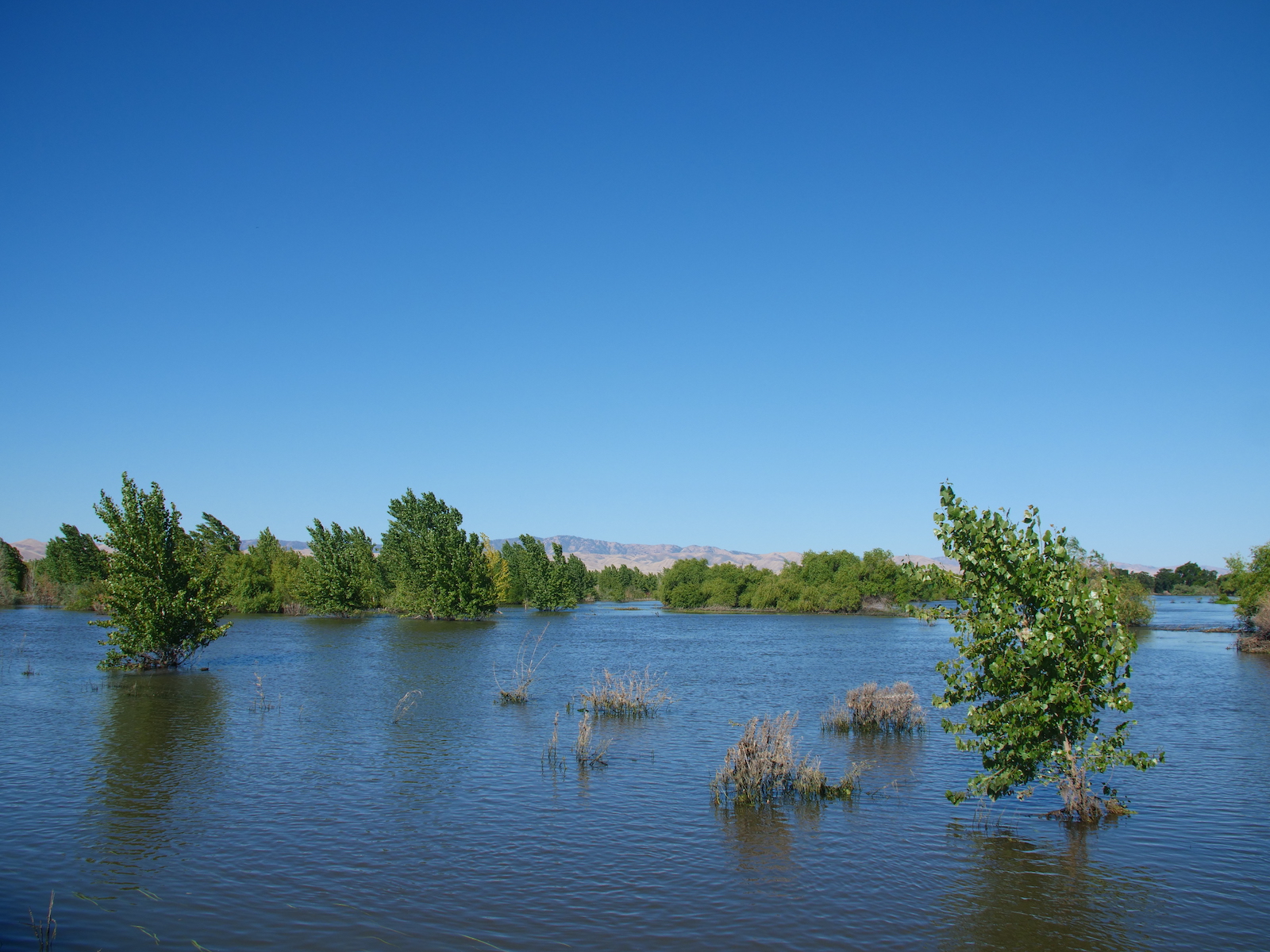
Water flows through part of Dos Rios Ranch Preserve. The former farmland now acts as a storage area for floodwaters during wet years. Cameron Nielsen / Grist
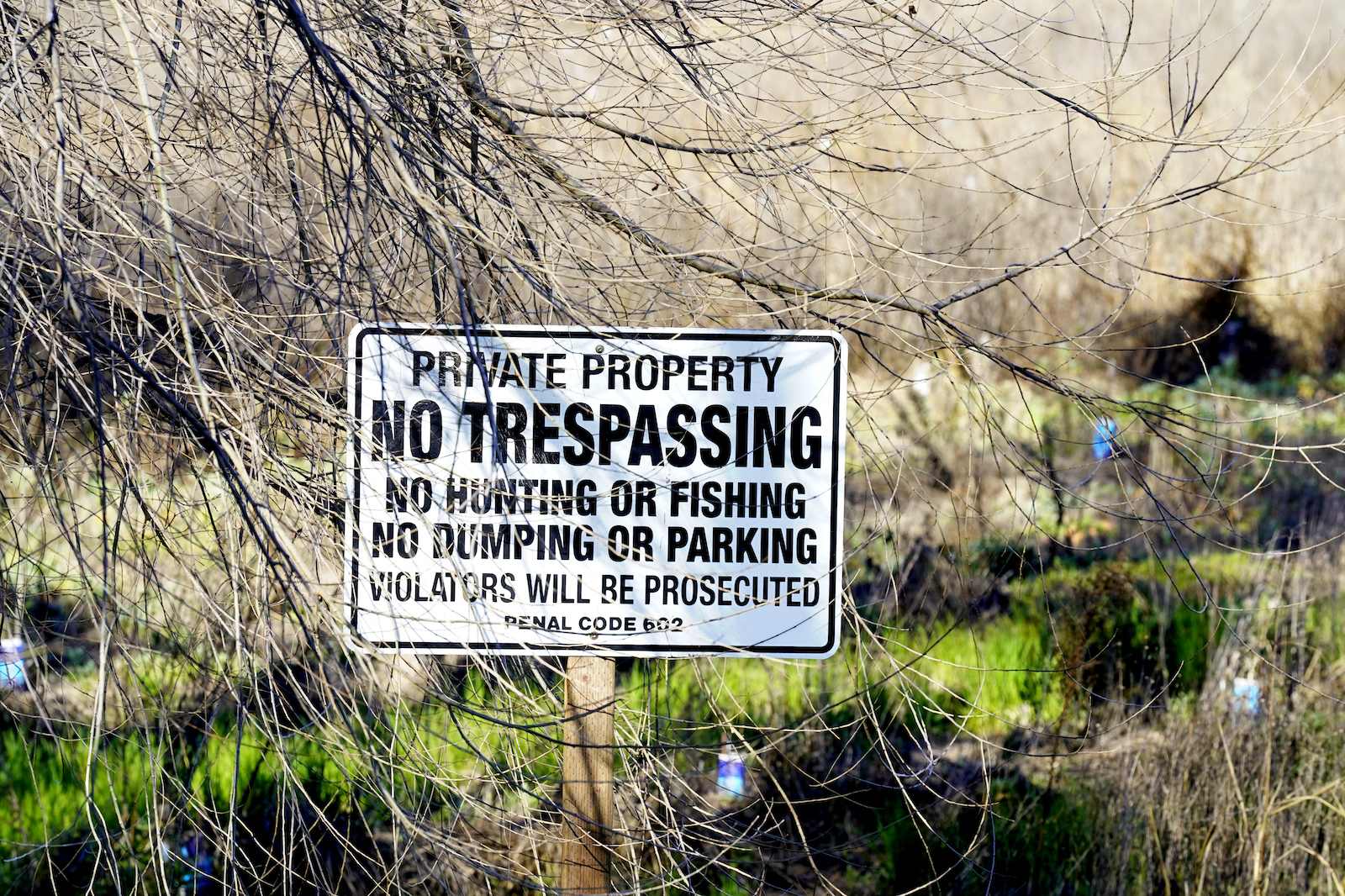
Austin Stevenot walks through Dos Rios Ranch Preserve. Stevenot manages the restored floodplain site. Cameron Nielsen / Grist. The floodplain, which is off limits for hunting, fishing, or dumping, absorbs excess water from the San Joaquin and Tuolumne Rivers. Rich Pedroncelli / AP Photo
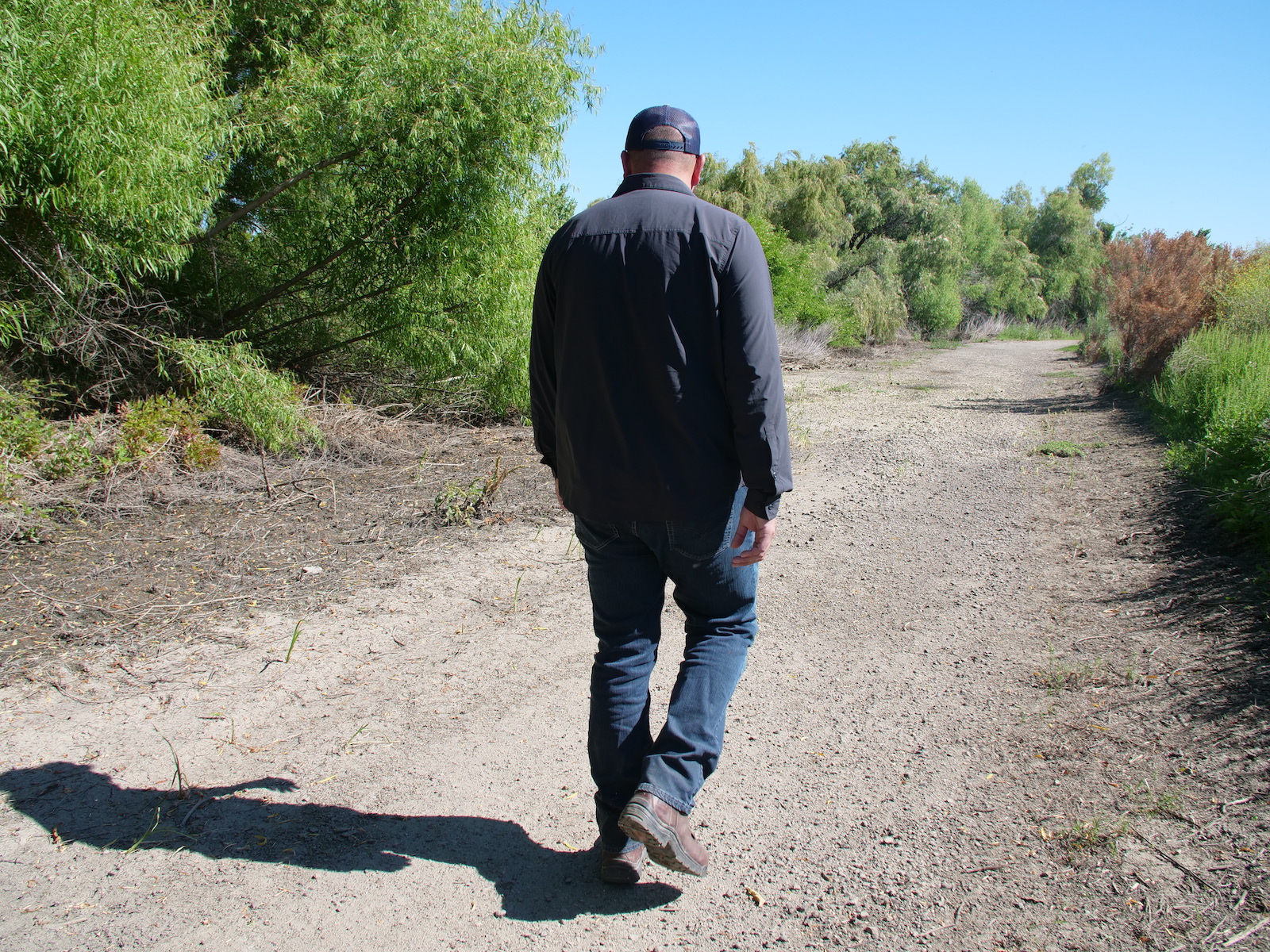
Stevenot’s own career path mirrors that of the land he now tends. Before he worked for River Partners, the small conservation nonprofit that developed the site, he spent eight years working at a packing plant that processed cherries and onions for export across the country. He was a lifelong resident of the San Joaquin Valley, but had never been able to use the traditions he’d learned from his Miwok family until he started working routine maintenance at the floodplain project. Now he presides over the whole ecosystem.
This year, after a deluge of winter rain and snow, water rolled down the San Joaquin and Tuolumne rivers, filling up the site for the first time since it had been restored. As Stevenot guided me across the landscape, he showed me all the ways that land and water were working together. In one area, water had spread like a sheet across three former fields, erasing the divisions that had once separated acres on the property. Elsewhere, birds had scattered seeds throughout what was once an orderly orchard, so that new trees soon obscured the old furrows.
The advent of the restoration project, known as Dos Rios, has worked wonders for this small section of the San Joaquin Valley, putting an end to frequent flooding in the area and altering long-held attitudes about environmental conservation. Even so, it represents just a chink in the armor of the Central Valley, where agricultural interests still control almost all the land and water. As climate change makes California’s weather whiplash more extreme, creating a cycle of drought and flooding, flood experts say replicating this work has become more urgent than ever.
But building another Dos Rios isn’t just about finding money to buy and reforest thousands of acres of land. To create a network of restored floodplains will also require reaching an accord with a powerful industry that has historically clashed with environmentalists — and that produces fruit and nuts for much of the country. Making good on the promise of Dos Rios will mean convincing the state’s farmers to occupy less land, irrigate with less water, and produce less food.
Cannon Michael, a sixth-generation farmer who runs Bowles Farming Company in the heart of the San Joaquin Valley, says such a shift is possible, but it won’t be easy.
“There’s a limited resource, there’s a warming climate, there’s a lot of constraints, and a lot of people are aging out, not always coming back to the farm,” Michael said. “There’s a lot of transition that’s happening anyway, and I think people are starting to understand that life is gonna change. And I think those of us who want to still be around the valley want to figure out how to make the outcome something we can live with.”
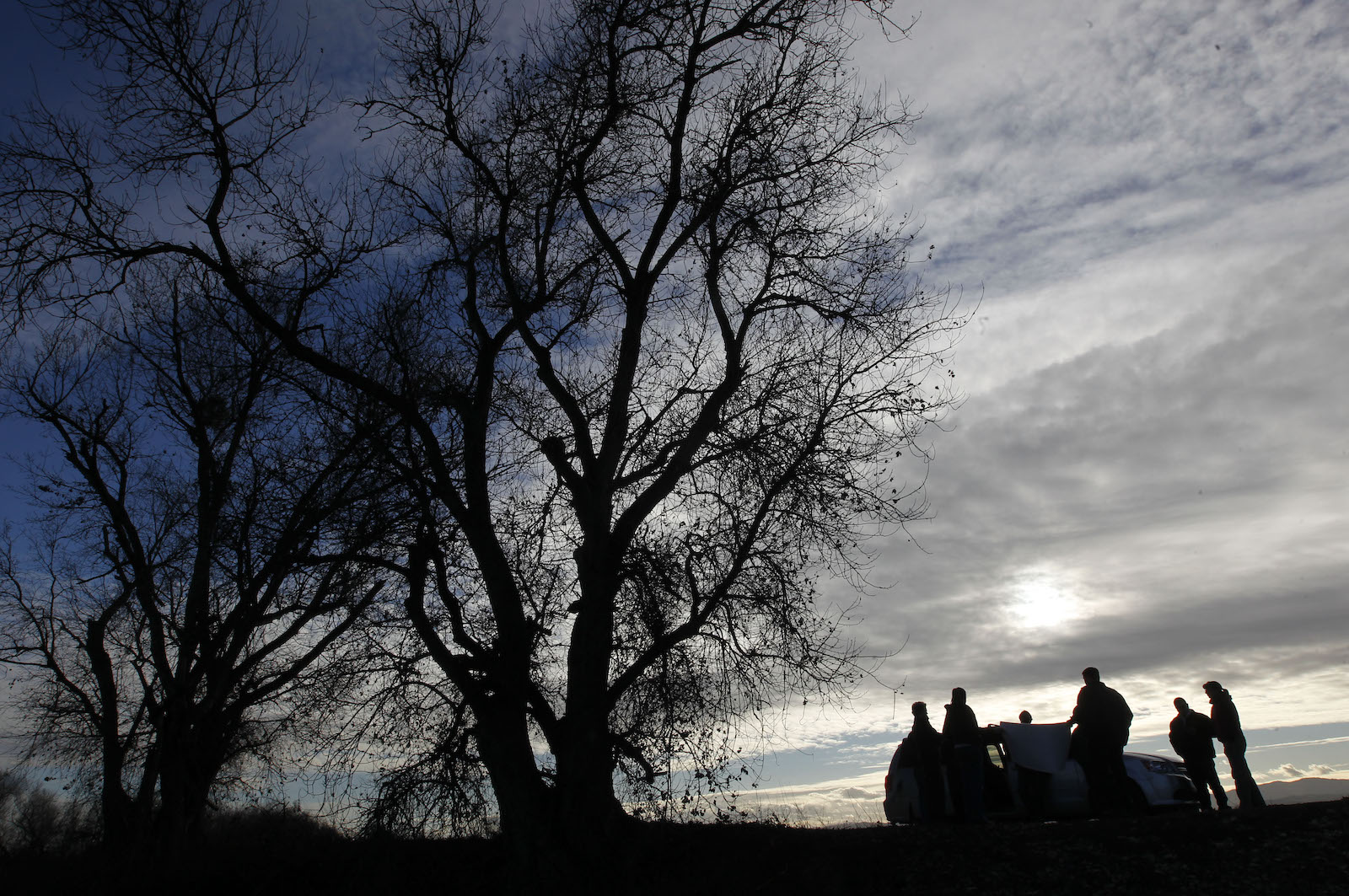
You can think of the last century of environmental manipulation in the Central Valley as one long attempt to create stability. Alfalfa fields and citrus orchards guzzle a lot of water, and nut trees have to be watered consistently for years to reach maturity, so farmers seeking to grow these crops can’t just rely on water to fall from the sky.
In the early 19th century, as white settlers first claimed land in the Central Valley, they found a turbulent ecosystem. The valley functioned as a drain for the mountains of the Sierra Nevada, sluicing trillions of gallons of water out to the ocean every spring. During the worst flood years, the valley would turn into what one 19th-century observer called an “inland sea.” It took a while, but the federal government and the powerful farmers who took over the valley got this water under control. They built dozens of dams in the Sierra Nevada, allowing them to store melting snow until they wanted to use it for irrigation, as well as hundreds of miles of levees that stopped rivers from flooding.
But by restricting the flow of the valley’s rivers, the government and the farmers also desiccated much of the valley’s land, depriving it of floodwaters that had nourished it for centuries.
“In the old days, all that floodwater would spread out over the riverbanks into adjacent areas and sit there for weeks,” said Helen Dahlke, a hydrologist at the University of California, Davis, who studies floodplain management. “That’s what fed the sediment, and how we replenish our groundwater reserves. The floodwater really needs to go on land, and the problem is that now the land is mainly used for other purposes.”
The development of the valley also allowed for the prosperity of families like that of Bill Lyons, the rancher who used to own the land that became Dos Rios. Lyons is a third-generation family farmer, the heir to a farming dynasty that began when his great-uncle E.T. Mape came over from Ireland. With his shock of gray hair and his standard uniform of starched dress shirt and jeans, Lyons is the image of the modern California farmer, and indeed he once served as the state’s secretary of agriculture.
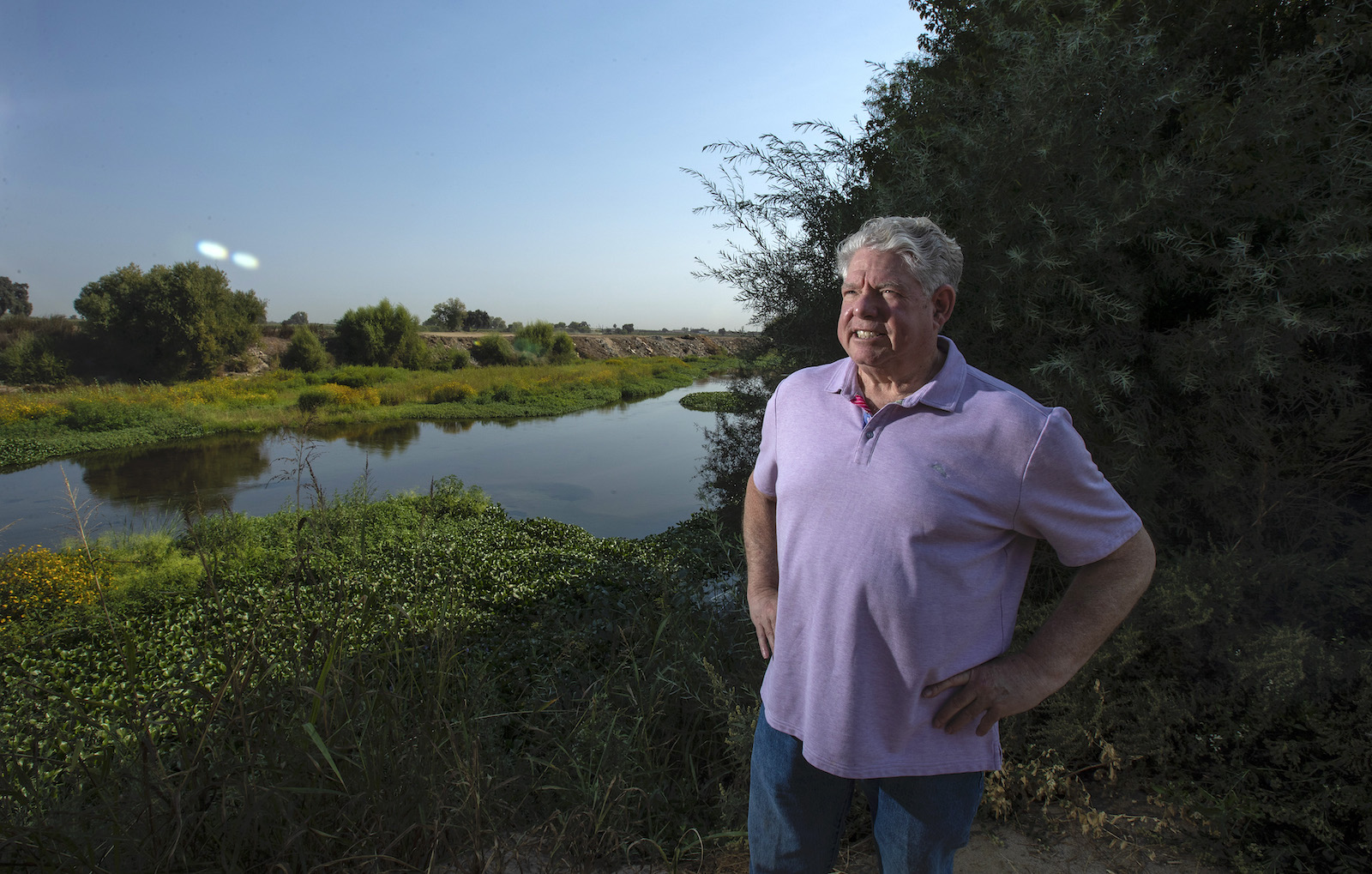
Lyons has expanded his family’s farming operation over the past several decades, stretching his nut orchards and dairy farms out across thousands of acres on the west side of the valley. But his territory straddles the San Joaquin River, and there was one farm property that always seemed to go underwater during wet years.
“It was an extremely productive ranch, and that was one of the reasons it attracted us,” said Lyons. But while the land’s low-elevation river frontage made its soil fertile, that same geography put its harvests at risk of flooding. “Over the 20 years that we owned it, I believe we got flooded out two or three times,” Lyons added.
In 2006, as he was repairing the farm after a flood, Lyons met a biologist named Julie Rentner, who had just joined River Partners. The conservation nonprofit’s mission was to restore natural ecosystems in river valleys across California, and it had completed a few humble projects over the previous decade, most of them on small chunks of not-too-valuable land in the north of the state. As Rentner examined the overdeveloped land of the San Joaquin Valley, she came to the conclusion that it was ready for a much larger restoration project than River Partners had ever attempted. And she thought Lyons’ land was the perfect place to start.
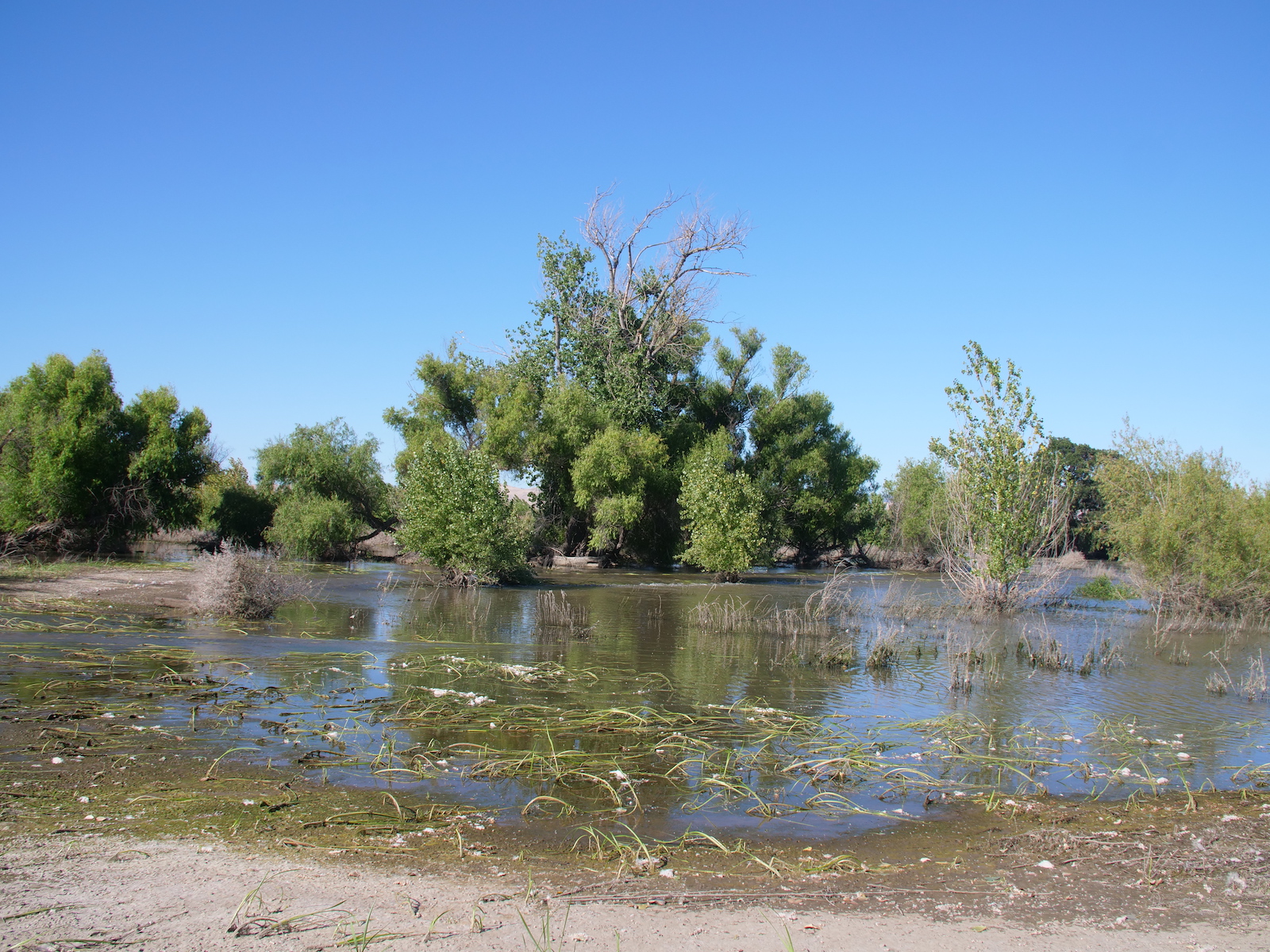
Most farmers would have bristled at such a proposition, especially those with deep roots in a region that depends on agriculture. But unlike many of his peers, Lyons already had some experience with conservation work: He had partnered with the U.S. Forest Service in the 1990s on a project that set aside some land for the Aleutian goose, an endangered species that just so happened to love roosting on his property. As Lyons started talking with Rentner, he found her practical and detail-oriented. Within a year, he and his family had made a handshake deal to sell her the flood-prone land. If she could find the money to buy the land and turn it into a floodplain, it was hers.
For Rentner, the process wasn’t anywhere near so easy. Finding the $26 million she needed to buy the land from Lyons — and the additional $14 million she needed to restore it — required scraping together money from a rogues’ gallery of funders including three federal agencies, three state agencies, a local utility commission, a nonprofit foundation, the electric utility Pacific Gas & Electric, and the beer company New Belgium Brewing.
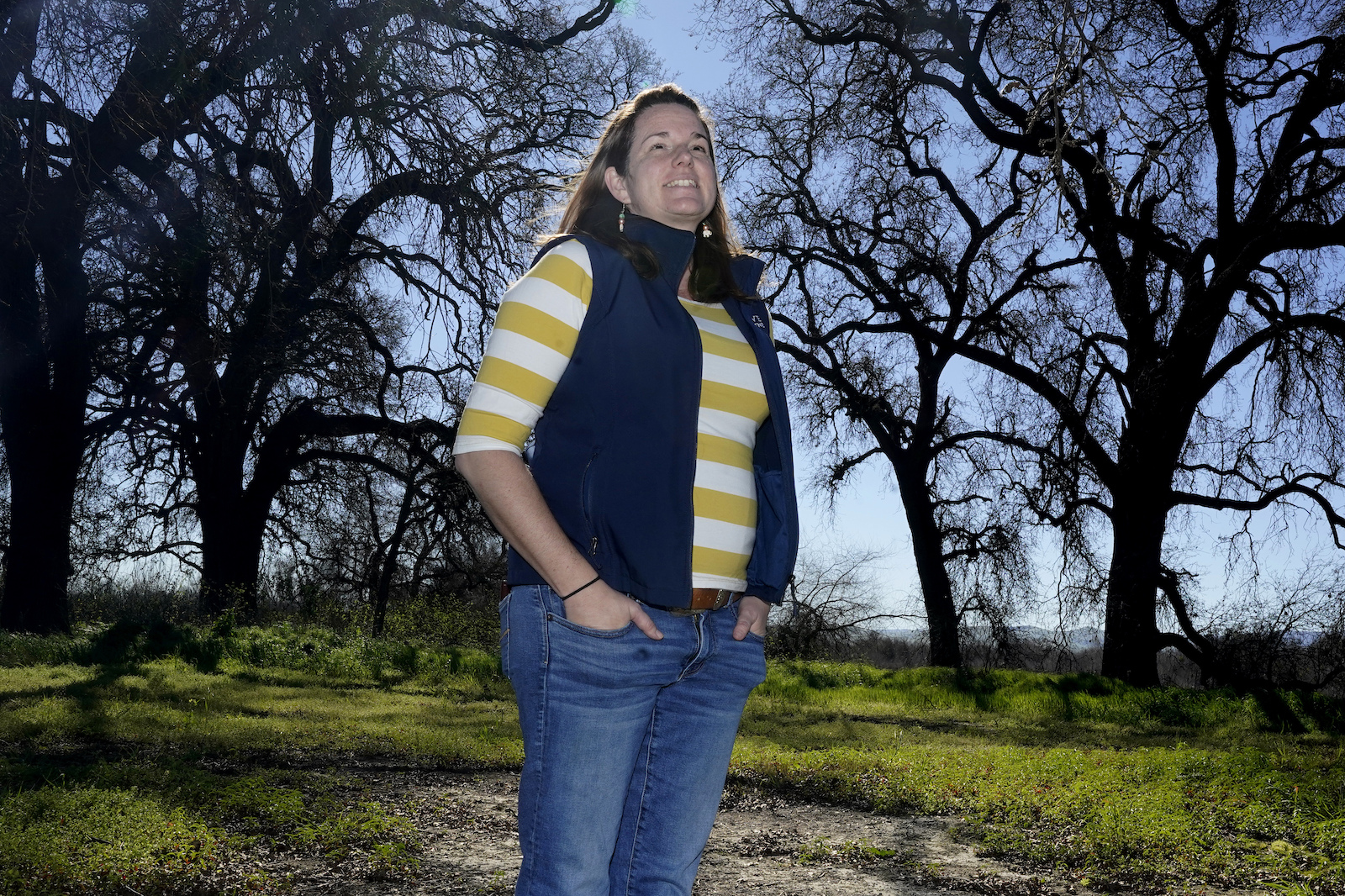
“I remember taking so many tours out there,” said Rentner, “and all the public funding agency partners would go, ‘OK, so you have a million dollars in hand, and you still need how many? How are you going to get there?’”
“I don’t know,” Rentner told them in response. “We’re just gonna keep writing proposals, I guess.”
Even once River Partners bought the land in 2012, Rentner found herself in a permitting nightmare: Each grant came with a separate set of conditions for what River Partners could and couldn’t do with the money, the deed to Lyons’ tract came with its own restrictions, and the government required the project to undergo several environmental reviews to ensure it wouldn’t harm sensitive species or other land. River Partners also had to hold dozens of listening sessions and community meetings to quell the fears and skepticism of nearby farmers and residents who worried about shutting down a farm to flood it on purpose.
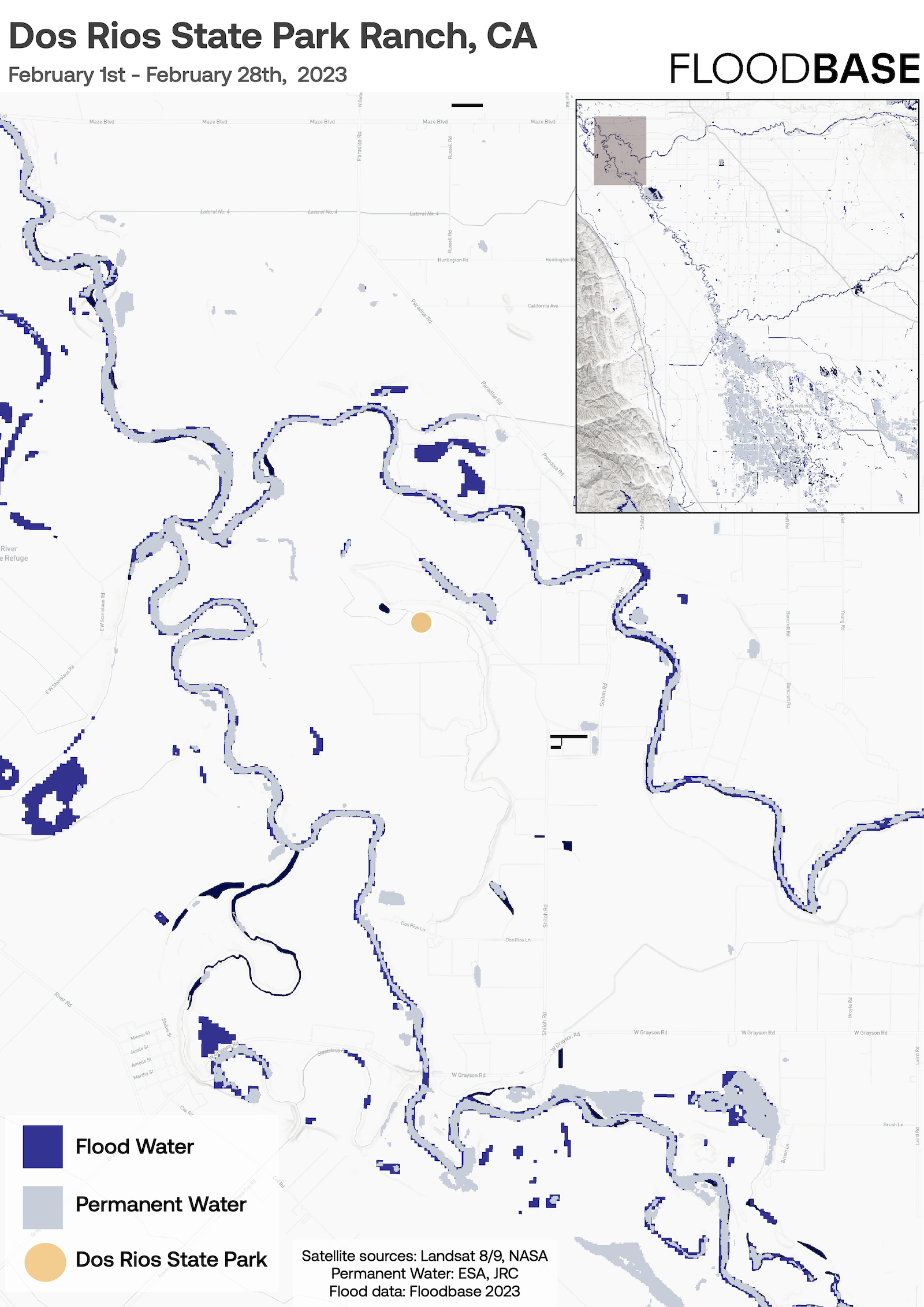
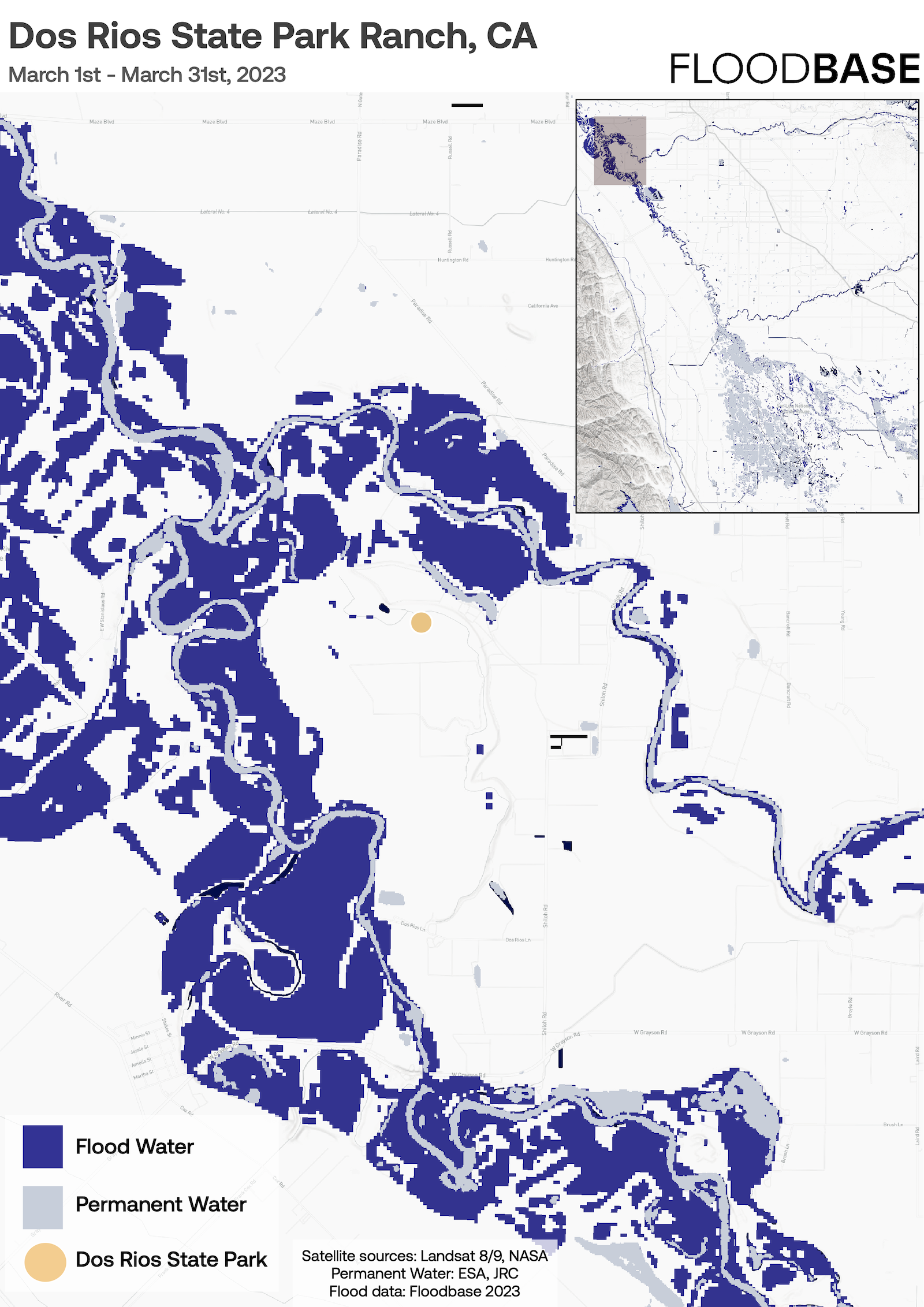
It took more than a decade for River Partners to complete the project, but now that it’s done, it’s clear that all those fears were unfounded. The restored floodplain absorbed a deluge from the huge “atmospheric river” storms that drenched California last winter, trapping all the excess water without flooding any private land. The removal of a few thousand acres of farmland hasn’t put anyone out of work in nearby towns, nor has it hurt local government budgets. Indeed, the groundwater recharge from the project may soon help restore the unhealthy aquifers below nearby Grayson, where a community of around 1,300 Latino agricultural workers has long avoided drinking well water contaminated with nitrates.
As new plants take root, the floodplain has become a self-sustaining ecosystem: It will survive and regenerate even through future droughts, with a full hierarchy of pollinators and base flora and predators like bobcats. Except for Stevenot’s routine cleanup and road repair, River Partners doesn’t have to do anything to keep it working in perpetuity. Come next year, the organization will hand the site over to the state, which will keep it open as California’s first new state park in more than a decade and let visitors wander on new trails.
“After three years of intensive cultivation, we walk away,” said Rentner. “We literally stopped doing any restoration work. The vegetation figures itself out, and what we’ve seen is, it’s resilient. You get a big deep flood like we have this year, and after the floodwaters recede what comes back is the native stuff.”
Dos Rios has managed to change the ecology of one small corner of the Central Valley, but the region’s water problems are gargantuan in scale. A recent NASA study found that water users in the valley are over-tapping aquifers by about 7 million acre-feet every year, sucking half a Colorado River’s worth of water out of the ground without putting any back. This overdraft has created zones of extreme land subsidence all over the valley, causing highways to crack and buildings to sink dozens of feet into the ground.
At the same time, floods are also getting harder to manage. The “atmospheric river” storms that drench California every few years are becoming more intense as the earth warms, pushing more water through the valley’s twisting rivers. The region escaped a catastrophic flood this year only thanks to a slow spring melt, but the future risks were clear. Two levees burst in the eastern valley town of Wilton, along the Cosumnes River, killing three people, and the historically Black town of Allensworth flooded as the once-dry Tulare Lake reappeared for the first time since 1997.
Fixing the state’s distorted water system for an era of climate change will be the work of many decades. In order to comply with California’s landmark law for regulating groundwater, which will take full effect by 2040, farmers will have to retire as much as a million acres of productive farmland, wiping out billions of dollars of revenue. Protecting the region’s cities from flooding, meanwhile, will require spending billions more dollars to bolster aging dirt levees and channels.
In theory, this dual mandate would make floodplain restoration an ideal way to deal with the state’s water problems. But the scale of the need is enormous, equivalent to dozens of projects on the same scale as Dos Rios.
“Dos Rios is good, but we need 50 more of it,” said Jane Dolan, the chair of the Central Valley Flood Protection Board, a state agency that regulates flood control in the region. “Do I think that will happen in my lifetime? No, but we have to keep working toward it.” Fifty more projects of the same size as Dos Rios would span more than 150 square miles, an area larger than the city of Detroit, Michigan. It would cost billions of dollars to purchase that much valuable farmland, saw away old levees, and plant new vegetation.
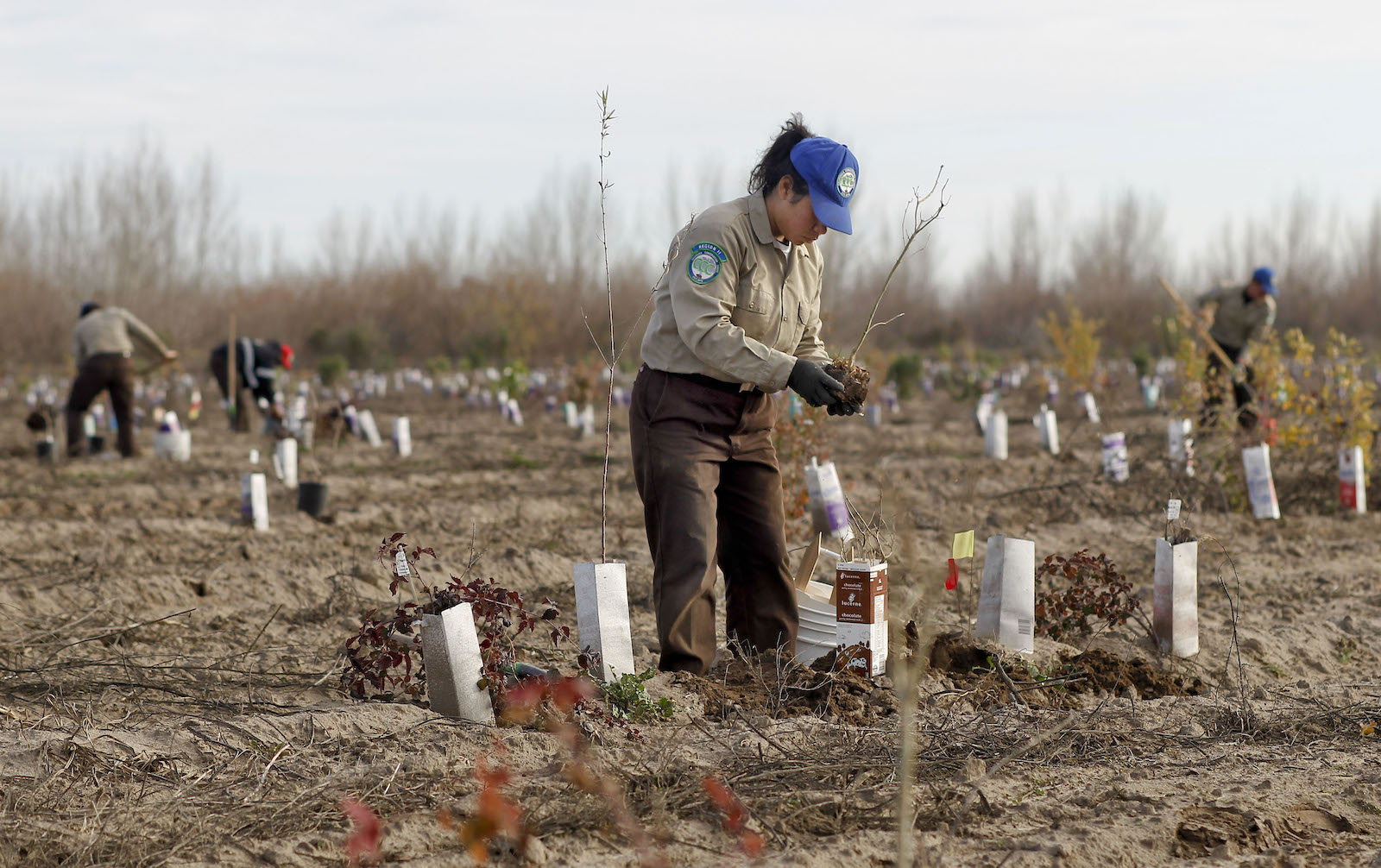
As successful as Rentner was in finding the money for Dos Rios, the nonprofit’s piecemeal approach could never fund restoration work at this scale. The only viable sources for that much funding are the state and federal governments. Neither has ever devoted significant public dollars to floodplain restoration, in large part because farmers in the Central Valley haven’t supported it. But that has started to change. Earlier this year, state lawmakers set aside $40 million to fund new restoration projects. Governor Gavin Newsom, fearing a budget crunch, tried to slash the funding at the start of the year, but reinserted it after furious protests from local officials along the San Joaquin. Most of this new money went straight to River Partners, and the organization has already started to clear the land on a site next to Dos Rios. It’s also in the process of closing on another 500-acre site nearby.
But even if nonprofits like River Partners get billions more dollars to buy agricultural land, creating the ribbon of natural floodplains that Dolan describes will still be difficult. That’s because river land in the Central Valley is also some of the most productive agricultural land in the world, and the people who own it have no incentive to forgo future profits by selling.
“Maybe we could do it some time down the road, but we’re farming in a pretty water-secure area,” said Cannon Michael, the sixth-generation farmer from Bowles Farm whose land sits on the upper San Joaquin River. The aquifers beneath his property are substantial, fed by seepage from the river, and he also has the rights to use water from the state’s canal system. “It’s a hard calculation because we’re employing a lot of people, and we’re doing stuff with the land, we’re producing.”
Even farmers who are running out of groundwater may not need to sell off their land in order to restore their aquifers. Don Cameron, who grows grapes in the eastern valley near the Kings River, has pioneered a technique that involves the intentional flooding of crop fields to recharge groundwater. Earlier this year, when a torrent of melting snow came roaring along the Kings, he used a series of pumps to pull it off the river and onto his vineyards. The water sank into the ground, where it refilled Cameron’s underground water bank, and the grapes survived just fine.
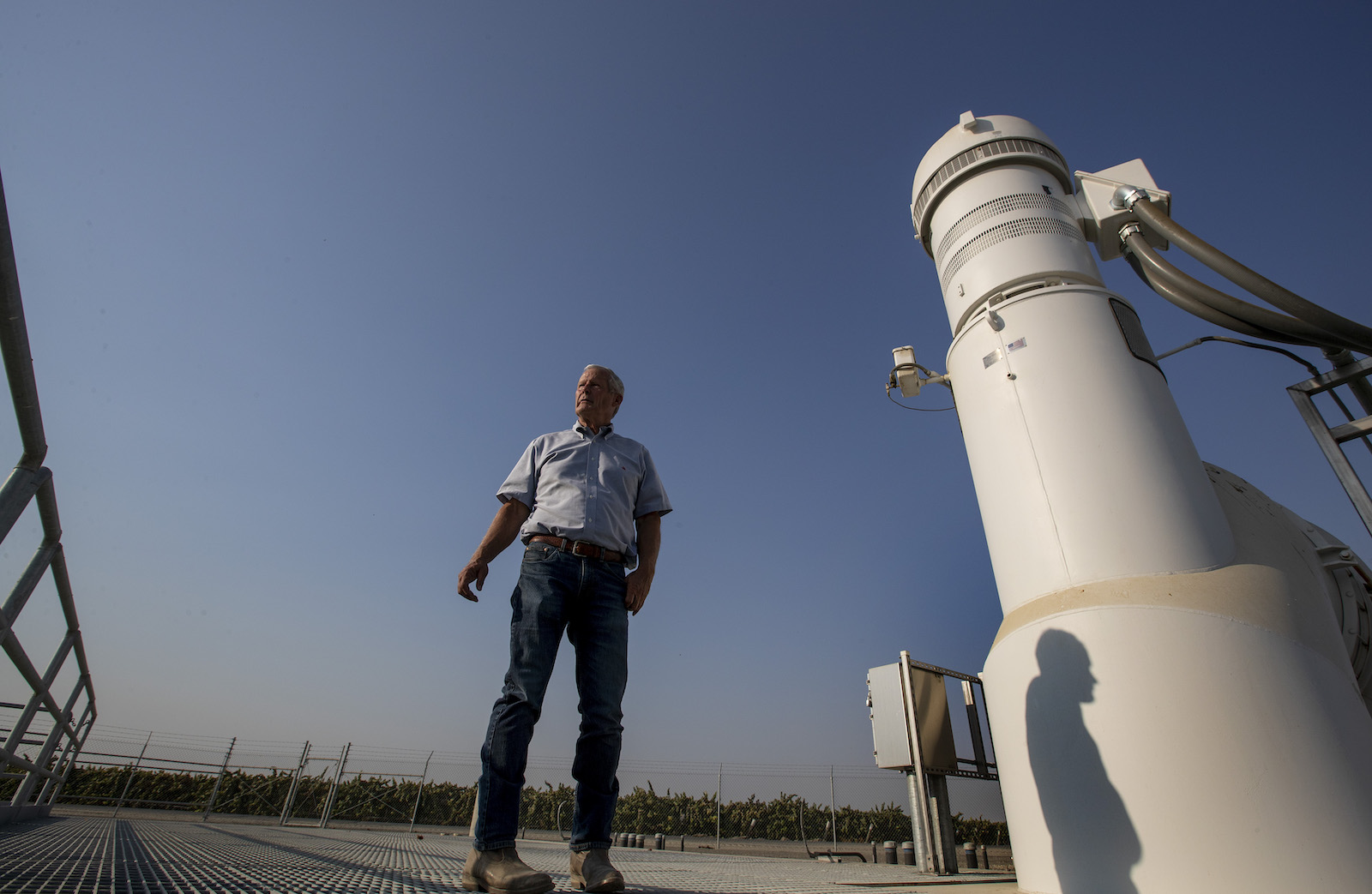
This kind of recharge project allows farmers to keep their land, so it’s much more palatable to big agricultural interests. The California Farm Bureau supports taking agricultural land out of commission only as a last resort, but it has thrown its weight behind recharge projects like Cameron’s, since they allow farmers to keep farming. The state government has also been trying to subsidize this kind of water capture, and other farmers have bought in: According to a state estimate, valley landowners may have caught and stored almost 4 million acre-feet of water this year.
“I’m familiar with Dos Rios, and I think it has a very good purpose when you’re trying to provide benefits to the river, but ours is more farm-centric,” said Cameron.
But Joshua Viers, a watershed scientist at the University of California, Merced, says these on-farm recharge projects may cannibalize demand for projects like Dos Rios. Not only does a project like Cameron’s not provide any flood control or ecological benefit, but it also provides a much narrower benefit to the aquifer, focusing water in a small square of land rather than allowing it to seep across a wide area.
“If you can build this string of beads down the river, with all these restored floodplains, where you can slow the water down and let it stay in for long periods of time, you’re getting recharge that otherwise wouldn’t happen,” he said.
As long as landowners see floodwater as a tool to support their farms rather than a force that needs to be respected, it will be difficult to replicate the success of Dos Rios. It’s this entrenched philosophy about the natural world, rather than financial constraints, that will be River Partners’ biggest barrier in the coming decades. In order to create Viers’ “string of beads,” Rentner and her colleagues would have to convert farmland all across the state.
It’s one thing to do that in a northern area like Sacramento, where officials designed flood bypasses on agricultural land a century ago. It’s quite another to do it farther south in the Tulare Basin, where the powerful farm company J.G. Boswell has been accused of channeling floodwater toward nearby towns in an effort to save its own tomato crops. River Partners is funneling some of the new state money toward restoration projects in this area, but these are small conservation efforts, and they don’t alter the landscape of the valley like Dos Rios does.
To export the Dos Rios model, River Partners will have to convince hundreds of farmers that it’s worth it to give up some of their land for the sake of other farmers, flood-prone cities, climate resilience, and endangered species. Rentner was able to build that consensus at Dos Rios through patience and open dialogue, but the path toward restoration in the rest of the state will likely be more painful. California farmers will need to retire thousands of acres of productive land over the coming decades as they respond to rising costs and water restrictions, and more acres will face the constant threat of flooding as storms intensify in a warming world and levees break. As landowners sell their parcels to solar companies or let fallow fields turn to dust, Rentner is hoping that she can catch some of them as they head for the exits.
“It’s going to be a challenge,” said Rentner. “We’re hopeful that some will think twice and say, ‘Wait, maybe we should take the time to sit down with the people in the conservation community and think about our legacy, think about what we’re leaving behind when we make this transaction.’ And maybe it’s not as simple as just the highest bidder.”


